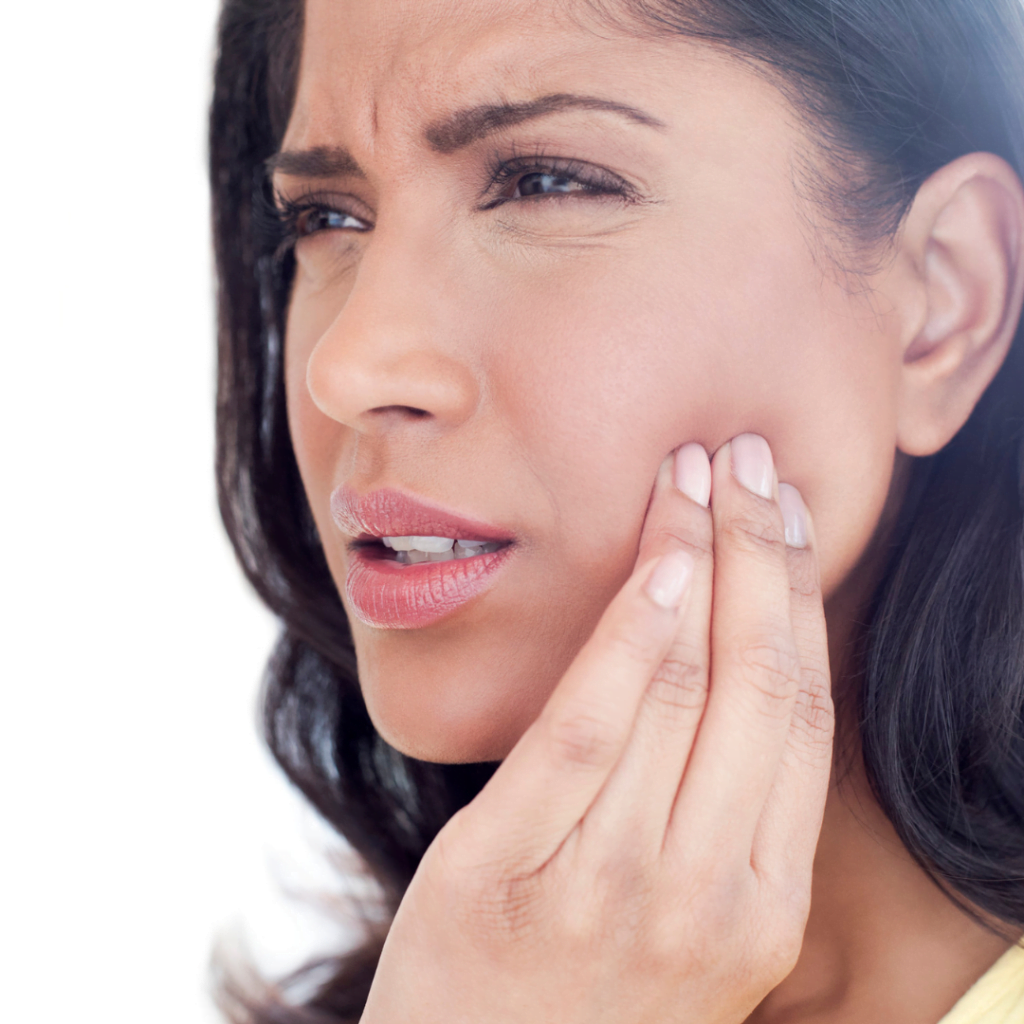Bruxism refers to the habit of grinding, gnashing, or clenching the teeth, often unconsciously. It can occur during the day or at night while sleeping (referred to as sleep bruxism). Bruxism can be caused by various factors, such as stress, anxiety, misaligned teeth, or an abnormal bite. Common symptoms of bruxism include tooth grinding sounds, jaw pain, headache, tooth sensitivity, and worn-down teeth.
On the other hand, TMJ stands for temporomandibular joint, which is the joint connecting your jawbone (mandible) to your skull. TMJ disorder, also known as temporomandibular disorder (TMD), refers to a group of conditions that affect the jaw joint and the surrounding muscles. It can cause pain and dysfunction in the jaw joint, leading to symptoms such as jaw pain or tenderness, difficulty opening or closing the mouth, clicking or popping sounds in the jaw, headaches, and facial pain.
While bruxism and TMJ disorder can be related, they are not the same thing. Bruxism can contribute to the development or exacerbation of TMJ disorder, as the excessive clenching and grinding of the teeth can put stress on the jaw joint. However, not all individuals with bruxism develop TMJ disorder, and not all individuals with TMJ disorder have bruxism. They are separate conditions with distinct causes and symptoms.
It’s important to note that both bruxism and TMJ disorder can have various underlying causes, including stress, anxiety, malocclusion (improper alignment of the teeth), or trauma to the jaw. If you’re experiencing symptoms related to teeth grinding or jaw joint pain, it’s advisable to consult with a dentist or healthcare professional for a proper diagnosis and appropriate treatment options.

-
Product on sale
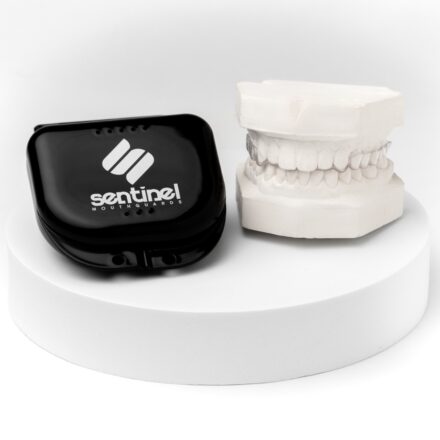 No-Show Day Mouth GuardOriginal price was: $149.00.$129.00Current price is: $129.00.
No-Show Day Mouth GuardOriginal price was: $149.00.$129.00Current price is: $129.00. -
Product on sale
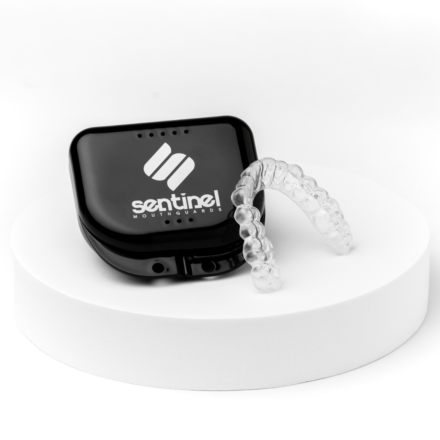 Durability Mouth Guard for Heavy Teeth GrindingOriginal price was: $215.00.$189.00Current price is: $189.00.
Durability Mouth Guard for Heavy Teeth GrindingOriginal price was: $215.00.$189.00Current price is: $189.00. -
Product on sale
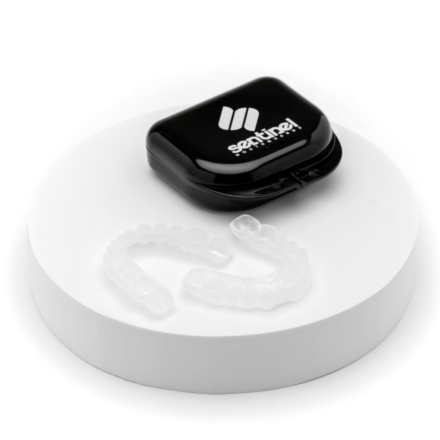 Tongue and Cheek Biting Relief Mouth GuardsOriginal price was: $189.00.$169.00Current price is: $169.00.
Tongue and Cheek Biting Relief Mouth GuardsOriginal price was: $189.00.$169.00Current price is: $169.00. -
Product on sale
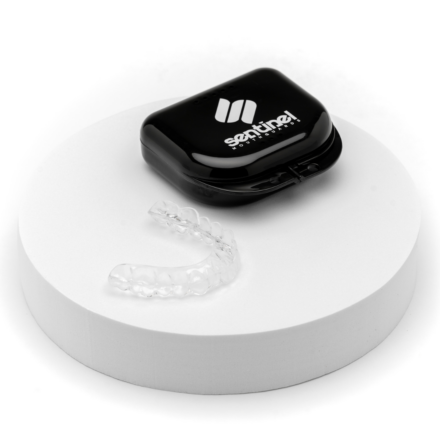 Custom Hard Night GuardOriginal price was: $169.00.$149.00Current price is: $149.00.
Custom Hard Night GuardOriginal price was: $169.00.$149.00Current price is: $149.00. -
Product on sale
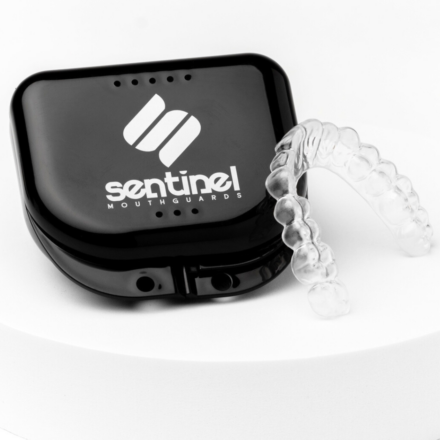 Custom Soft Night GuardOriginal price was: $149.00.$129.00Current price is: $129.00.
Custom Soft Night GuardOriginal price was: $149.00.$129.00Current price is: $129.00. -
Product on sale
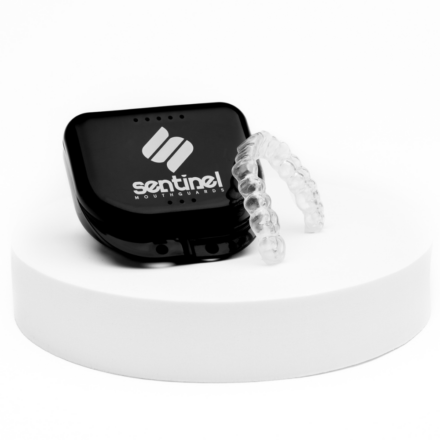 Custom Dual Laminated Night GuardOriginal price was: $169.00.$149.00Current price is: $149.00.
Custom Dual Laminated Night GuardOriginal price was: $169.00.$149.00Current price is: $149.00.
What are the causes of bruxism?
The exact causes of bruxism, or teeth grinding/clenching, are not fully understood. However, several factors are believed to contribute to the development of bruxism. These causes can vary from person to person. Here are some common factors that may contribute to bruxism:
- Stress and anxiety: High levels of stress or anxiety can increase the likelihood of developing bruxism or exacerbate existing grinding habits.
- Malocclusion or abnormal bite: Misalignment of the teeth or jaws can lead to an uneven distribution of forces during biting and chewing, potentially triggering bruxism.
- Sleep disorders: Bruxism is often associated with sleep disorders such as sleep apnea, where breathing interruptions during sleep can contribute to teeth grinding.
- Medications and substances: Certain medications, such as antidepressants, can increase the risk of bruxism. Additionally, the use of stimulants like caffeine, tobacco, or alcohol has been linked to teeth grinding.
- Lifestyle factors: Excessive consumption of alcohol, smoking, and recreational drug use have been associated with an increased risk of bruxism.
- Psychological factors: Certain psychological factors like personality traits (such as aggression or competitiveness) or coping mechanisms (such as tension release) may contribute to bruxism.
- Other medical conditions: Bruxism can sometimes occur as a result of underlying medical conditions such as Parkinson’s disease, Huntington’s disease, or gastroesophageal reflux disorder (GERD).
How can I tell if I have bruxism?
Identifying bruxism can sometimes be challenging, especially if you grind your teeth during sleep. However, there are several signs and symptoms that may indicate the presence of bruxism. Here are some common indicators to look out for:
- Teeth grinding sounds: If you sleep with a partner or share a bedroom, they may notice grinding or gnashing sounds during your sleep.
- Jaw pain and facial discomfort: Bruxism can cause soreness or pain in the jaw joint (temporomandibular joint) and facial muscles. This pain may be more noticeable upon waking up and may subside as the day progresses.
- Headaches: Frequent morning headaches, often originating from the temples or behind the eyes, can be a sign of bruxism.
- Tooth sensitivity: Excessive teeth grinding can wear down the enamel, leading to increased tooth sensitivity to hot or cold temperatures.
- Worn-down teeth: Bruxism can result in flattened, chipped, fractured, or loose teeth. Dentists may also observe signs of tooth wear during regular dental examinations.
- Jaw muscle swelling: The constant tension and strain on the jaw muscles can cause them to become swollen, leading to a more prominent appearance.
- Disrupted sleep patterns: If you have bruxism, you may experience disturbed sleep, waking up frequently during the night or feeling tired upon waking.
- Cheek or tongue damage: Chronic teeth grinding may cause injuries inside your mouth, resulting in cheek bites or tongue indentations.
If you suspect that you have bruxism based on these signs and symptoms, it is recommended to consult with a dentist or healthcare professional. They can conduct a thorough evaluation, examine your teeth and jaw, and provide a proper diagnosis. In some cases, they may suggest further assessments, such as sleep studies, to confirm the presence of bruxism and determine the appropriate treatment options.
What are the effects of untreated bruxism?
If left untreated, bruxism can have several negative effects on your oral health, overall well-being, and quality of life. Here are some potential consequences of untreated bruxism:
- Tooth damage: The constant grinding and clenching of teeth can lead to significant tooth wear, chipping, fracturing, or even tooth loss. This can result in the need for extensive dental treatments such as dental crowns, bridges, or implants to restore the damaged teeth.
- Jaw pain and discomfort: Untreated bruxism can cause persistent jaw pain, soreness, or tenderness. It may also contribute to the development or exacerbation of temporomandibular joint disorder (TMJ disorder), leading to further jaw joint pain and dysfunction.
- Headaches and facial pain: Bruxism can be associated with frequent headaches, migraines, or facial pain, particularly in the temples or around the jaw joint.
- TMJ disorders: Bruxism can contribute to the development of TMJ disorders, characterized by jaw joint problems, difficulty in opening or closing the mouth, clicking or popping sounds, and restricted jaw movement. These conditions can cause ongoing pain and limitations in jaw function.
- Disrupted sleep patterns: Bruxism can disrupt your sleep patterns, both for yourself and your sleep partner. The grinding noises and movements can disturb your sleep, leading to reduced sleep quality and daytime fatigue.
- Tension and muscle pain: Bruxism can lead to tension and pain in the muscles of the face, neck, and shoulders. This can cause discomfort and limit your ability to perform daily activities comfortably.
- Increased tooth sensitivity: The enamel of the teeth can wear down due to bruxism, resulting in increased tooth sensitivity to hot, cold, or sweet stimuli.
- Gum problems: Bruxism can contribute to gum recession, gum inflammation (gingivitis), or even periodontal disease if the grinding leads to excessive force on the gum tissue.
- Emotional impact: The chronic pain, dental problems, and disrupted sleep associated with untreated bruxism can lead to emotional distress, including increased stress, anxiety, and a negative impact on overall well-being.
What are the treatment options for bruxism?
The treatment options for bruxism aim to manage the symptoms, prevent further damage, and address the underlying causes. The most appropriate treatment will depend on the severity of your bruxism, its underlying causes, and your specific situation. Here are some common approaches to treating bruxism:
- Mouthguards or splints: A commonly used treatment involves wearing a mouthguard or splint while sleeping. These custom-made oral devices create a barrier between your upper and lower teeth, protecting them from the grinding and clenching forces. They can help reduce muscle tension, alleviate jaw pain, and prevent tooth damage.
- Botox injections: In some cases, botulinum toxin (Botox) injections may be used to relax the muscles responsible for jaw clenching. This treatment can help reduce the intensity of muscle contractions and alleviate symptoms of bruxism. However, it’s important to note that this is an off-label use of Botox, and its effectiveness may vary.
- Stress management techniques: Since stress and anxiety can contribute to bruxism, stress management techniques may be beneficial. These can include relaxation exercises, counseling, cognitive-behavioral therapy (CBT), and other stress-reduction strategies to help manage and cope with underlying psychological factors.
- Dental corrections: In cases where bruxism is caused by misaligned teeth or an abnormal bite (malocclusion), dental corrections may be recommended. This can involve orthodontic treatments to straighten the teeth or dental restorations to correct the bite alignment.
- Lifestyle changes: Making certain lifestyle changes can help reduce the symptoms of bruxism. These include avoiding or reducing the consumption of caffeine, alcohol, and tobacco, as they can worsen teeth grinding. Additionally, practicing good sleep hygiene, such as maintaining a regular sleep schedule and creating a relaxing bedtime routine, may also be beneficial.
- Medications: In some situations, medications may be prescribed to manage bruxism symptoms. Muscle relaxants or medications that help regulate sleep patterns can be considered in specific cases, but they are typically used on a short-term basis due to potential side effects and limited evidence of long-term effectiveness.
- Behavior modification techniques: Awareness and behavior modification techniques can help break the habit of teeth grinding. These may include techniques like jaw relaxation exercises, biofeedback, or habit-reversal training. Working with a healthcare professional experienced in behavioral therapies can provide guidance and support in implementing these techniques.
Can stress and anxiety cause bruxism?
Yes, stress and anxiety are recognized as common contributing factors to the development or worsening of bruxism. The relationship between bruxism and psychological factors like stress and anxiety is complex and can vary from person to person. However, the following mechanisms help explain how stress and anxiety can influence bruxism:
- Increased muscle tension: Stress and anxiety can lead to increased muscle tension throughout the body, including the jaw muscles. This heightened muscle activity can contribute to teeth grinding and clenching.
- Altered neurotransmitter levels: Psychological stress can affect the levels of neurotransmitters in the brain, such as dopamine and serotonin, which play a role in regulating muscle activity. Imbalances in these neurotransmitters may influence the muscles involved in chewing and lead to bruxism.
- Sleep disturbances: Stress and anxiety can disrupt sleep patterns and quality. Sleep disorders, such as insomnia or sleep apnea, are often associated with bruxism. These disturbances can further exacerbate teeth grinding during sleep.
- Coping mechanism: Some individuals may unconsciously develop teeth grinding as a way to cope with stress or anxiety. The physical act of clenching or grinding the teeth may provide temporary relief or a sense of release from tension.
It’s important to note that while stress and anxiety can contribute to the development or worsening of bruxism, they may not be the sole causes. Other factors, such as malocclusion (improper teeth alignment) or genetic predisposition, can also play a role.
Managing stress and anxiety can be beneficial in reducing bruxism symptoms. Employing stress-reduction techniques, such as relaxation exercises, meditation, counseling, or other stress-management strategies, may help alleviate bruxism symptoms. Additionally, addressing the underlying causes of stress and anxiety can have a positive impact on reducing teeth grinding.
If you suspect that stress or anxiety is contributing to your bruxism, it’s advisable to consult with a dentist or healthcare professional. They can provide a comprehensive evaluation, determine the factors contributing to your bruxism, and recommend appropriate treatment options tailored to your specific needs.
How can I stop grinding my teeth at night?
To help stop grinding your teeth at night, here are some strategies and lifestyle changes you can consider:
- Wear a mouthguard or splint: A custom-fitted dental mouthguard or splint can create a barrier between your upper and lower teeth, preventing direct contact and reducing the damage caused by grinding. Consult with a dentist to have one professionally made specifically for your teeth.
- Stress reduction techniques: Since stress and anxiety can contribute to teeth grinding, finding ways to manage and reduce stress levels can be helpful. Engage in relaxation techniques such as deep breathing exercises, meditation, yoga, or engaging in hobbies and activities that help you unwind.
- Establish a relaxing bedtime routine: Create a consistent routine before bed to signal to your body that it’s time to relax and wind down. Avoid stimulating activities such as using electronic devices or engaging in intense physical exercise close to bedtime.
- Avoid stimulating substances: Reduce or avoid the consumption of caffeine, alcohol, and tobacco, especially in the evening, as these substances can worsen teeth grinding.
- Jaw and facial muscle relaxation exercises: Practice relaxation exercises to help release tension in the jaw and facial muscles. These may include gentle jaw stretches, massage, or applying warm compresses to the jaw area before bedtime.
- Sleep hygiene: Maintain good sleep hygiene practices, such as ensuring a comfortable sleep environment, maintaining a regular sleep schedule, and avoiding stimulating activities before bed.
- Positional adjustments: Experiment with different sleeping positions to find one that minimizes teeth grinding. Avoid sleeping on your stomach, as this can put more pressure on the jaw and encourage teeth grinding.
- Be aware of teeth clenching: Throughout the day, be mindful of your jaw and facial muscles. If you catch yourself clenching your teeth during the day, consciously relax your jaw and position your teeth slightly apart to avoid unnecessary tension.
- Seek professional help: If self-help strategies are not effective, or if you experience persistent symptoms and tooth damage, it is advisable to consult with a dentist or healthcare professional. They can assess your condition, identify underlying causes, and recommend appropriate treatment options tailored to your specific needs.
Remember, it may take time to break the habit of teeth grinding, and a combination of strategies may be needed for effective management. Patience and consistency in implementing these techniques can help in reducing teeth grinding and its associated symptoms.
What are the symptoms of TMJ disorder?
TMJ disorder, or temporomandibular joint disorder, can present with a range of symptoms that affect the jaw joint and surrounding areas. The symptoms can vary in severity and may come and go. Here are some common symptoms associated with TMJ disorder:
- Jaw pain: Pain in the jaw joint (temporomandibular joint) is a primary symptom of TMJ disorder. The pain may be localized to the joint itself or radiate to the surrounding areas, including the jaw muscles, face, temples, or ears. The pain can be persistent or intermittent and may worsen with jaw movement or when biting or chewing.
- Jaw clicking or popping: You may experience clicking, popping, or grating sounds when opening or closing your mouth. These sounds can occur due to the displacement of the disc inside the joint or changes in the joint’s structure.
- Jaw locking: TMJ disorder can cause the jaw to temporarily lock or get stuck in an open or closed position. This can be painful and restrict the range of motion of the jaw.
- Difficulty or discomfort when chewing: If you have TMJ disorder, you may experience discomfort or pain while chewing or biting. This can make eating certain foods challenging or uncomfortable.
- Facial pain and headaches: TMJ disorder can cause facial pain, often in the temples, cheeks, or around the jaw joint. It may be accompanied by tension headaches, migraines, or pain in the neck and shoulders.
- Ear-related symptoms: TMJ disorder can be associated with ear-related symptoms, including ear pain, a feeling of fullness or pressure in the ears, tinnitus (ringing or buzzing in the ears), or dizziness.
- Jaw muscle stiffness or fatigue: The muscles that control jaw movement may feel stiff, tired, or achy. This can make it difficult to open your mouth fully or maintain normal jaw movements.
- Changes in bite or tooth alignment: TMJ disorder can sometimes cause the upper and lower teeth to not fit together properly. You may notice changes in your bite or tooth alignment, such as an uncomfortable or uneven bite.
Bruxism vs TMJ Dysfunction
| Bruxism | TMJ Dysfunction | |
|---|---|---|
| Is it a behavior? | Yes | No |
| Is it one distinct condition? | Yes | No |
| Is it caused by another condition? | Sometimes | Yes |
| Can it be treated with a night guard? | Yes | Yes |
How is TMJ disorder diagnosed?
TMJ disorder, or temporomandibular joint disorder, can be diagnosed through a comprehensive evaluation by a dentist or healthcare professional. The diagnosis typically involves the following steps:
- Medical history and symptom assessment: The healthcare professional will begin by discussing your medical history, including any previous jaw injuries, dental treatments, or conditions that may be contributing to your symptoms. They will also inquire about the specific symptoms you are experiencing, their duration, and any factors that worsen or alleviate them.
- Physical examination: A physical examination will be conducted, which may involve palpating (feeling) the jaw joint and surrounding muscles to identify areas of tenderness, swelling, or abnormalities. The healthcare professional will observe your jaw movements, listen for clicking or popping sounds, and assess the range of motion of your jaw.
- Imaging tests: In some cases, imaging tests may be recommended to evaluate the temporomandibular joint and rule out other possible causes of your symptoms. These tests can include:
- X-rays: X-ray images can help visualize the bones of the jaw and temporomandibular joint to identify any structural abnormalities or signs of joint degeneration.
- CT scan (Computed Tomography): CT scans provide detailed cross-sectional images of the joint, helping to assess the bony structures and detect any significant anatomical issues.
- MRI (Magnetic Resonance Imaging): An MRI can provide more detailed images of the joint, including the surrounding soft tissues such as the discs, muscles, and ligaments. It can help evaluate the condition of the joint and identify any internal derangements.
- Bite analysis: The dentist may evaluate your bite (occlusion) to check for any misalignment or abnormalities that may contribute to TMJ disorder. This can involve assessing how your upper and lower teeth fit together, looking for signs of tooth wear, and evaluating the balance of your bite.
- Consultation with specialists: In complex cases or when conservative treatments have not been successful, the dentist may refer you to a specialist, such as an oral and maxillofacial surgeon or a TMJ specialist, for further evaluation and treatment options.
What can I do to relieve TMJ pain?
There are several self-care and home remedies you can try to relieve TMJ pain and manage your symptoms. However, it’s important to note that these measures may provide temporary relief and should not replace a professional evaluation or treatment if your symptoms persist or worsen. Here are some suggestions to help alleviate TMJ pain:
- Apply moist heat or cold packs: Applying a warm compress or moist heat to the jaw area can help relax the muscles and reduce pain and stiffness. Alternatively, cold packs or ice wrapped in a cloth can help numb the area and reduce swelling. Apply heat or cold for about 15 minutes at a time, several times a day as needed.
- Practice jaw exercises and stretches: Gentle jaw exercises and stretches can help improve jaw mobility, reduce muscle tension, and relieve pain. Consult with a healthcare professional or physical therapist to learn specific exercises suitable for your condition.
- Over-the-counter pain relievers: Nonsteroidal anti-inflammatory drugs (NSAIDs), such as ibuprofen or naproxen, can help reduce pain and inflammation associated with TMJ disorder. Follow the recommended dosage instructions and consult with a healthcare professional if you have any underlying medical conditions or are taking other medications.
- Soft diet and avoiding excessive jaw movements: Stick to soft foods that require minimal chewing to reduce strain on the jaw joint and muscles. Avoid hard, chewy, or sticky foods that can aggravate TMJ pain. Cut food into small, bite-sized pieces to minimize jaw movements.
- Avoid excessive jaw movements and habits: Avoid activities that strain the jaw joint, such as wide yawning, excessive talking, gum chewing, or biting your nails. Be mindful of clenching your jaw or grinding your teeth, as these habits can worsen TMJ symptoms. If you notice yourself clenching during the day, try to consciously relax your jaw and position your teeth slightly apart.
- Stress management techniques: Since stress can contribute to TMJ pain, stress management techniques can be beneficial. Engage in relaxation exercises, meditation, deep breathing, or other stress-reduction activities to help relax the jaw muscles and reduce tension.
- Jaw massage and self-care techniques: Gently massaging the jaw muscles can help relieve tension and promote relaxation. You can use your fingertips to apply gentle circular or kneading motions to the jaw area. Consult with a physical therapist or healthcare professional for guidance on proper self-care techniques.
- Good posture: Maintain good posture, both while sitting and standing, to promote proper alignment of the jaw and reduce strain on the muscles and joints.
It’s important to remember that these self-care measures are aimed at symptom management and may not address the underlying causes of TMJ disorder. If your symptoms persist, worsen, or significantly impact your quality of life, it is recommended to consult with a dentist or healthcare professional who specializes in TMJ disorders. They can provide a comprehensive evaluation, determine the underlying causes of your symptoms, and recommend appropriate treatment options tailored to your specific needs.
Can bruxism lead to TMJ disorder?
Yes, bruxism (teeth grinding and clenching) can potentially lead to the development or exacerbation of TMJ disorder (temporomandibular joint disorder). While bruxism and TMJ disorder are distinct conditions, there is a close relationship between the two, and bruxism can contribute to the development or worsening of TMJ symptoms. Here’s how bruxism can impact TMJ:
- Increased stress on the jaw joint: The excessive forces generated by teeth grinding and clenching can put additional stress on the temporomandibular joint. This increased stress can lead to inflammation, muscle tension, and damage to the joint structures, contributing to TMJ disorder.
- Jaw muscle fatigue and imbalance: Bruxism can cause the jaw muscles to become fatigued and overworked. This prolonged muscle activity and imbalance can affect the proper functioning of the temporomandibular joint, leading to TMJ symptoms.
- Trauma to the joint and surrounding structures: The repetitive motion and excessive forces associated with bruxism can cause trauma to the temporomandibular joint and the surrounding tissues, including the muscles, ligaments, and disc. This trauma can result in joint dysfunction and the development of TMJ disorder.
- Changes in the bite: Bruxism can lead to changes in the alignment and positioning of the teeth, which can impact the way the upper and lower jaws fit together. Altered bite alignment can contribute to TMJ symptoms, as it affects the proper functioning and alignment of the temporomandibular joint.
Conclusion
In conclusion, bruxism and TMJ disorder are closely related conditions that can significantly impact an individual’s oral health and overall well-being. Bruxism, characterized by teeth grinding and clenching, can contribute to the development or exacerbation of TMJ disorder, which affects the temporomandibular joint.
Stress, anxiety, and other factors can contribute to both conditions. While self-care measures such as stress reduction techniques, mouthguards, and lifestyle adjustments can provide temporary relief, it’s important to consult with a dentist or healthcare professional for a comprehensive evaluation and personalized treatment plan.
Addressing both bruxism and TMJ disorder through a combination of approaches can help alleviate symptoms, promote oral health, and improve the quality of life for individuals affected by these conditions.
Would you like to learn more about Sentinel Mouthguards products and services? Visit our help center today!

